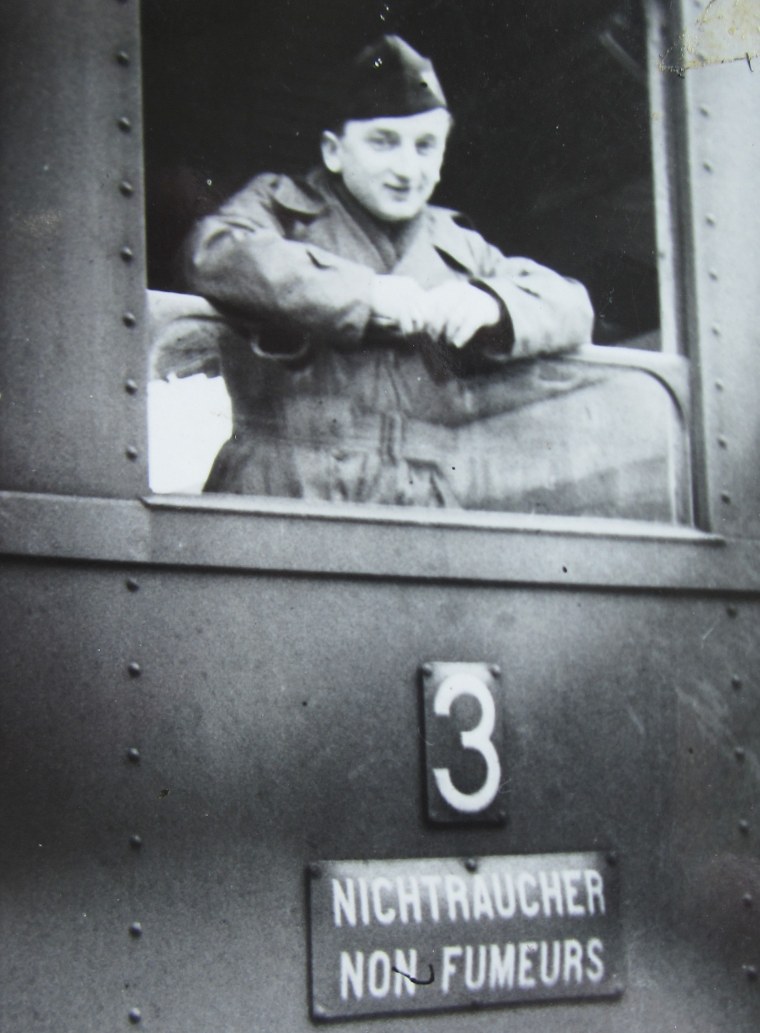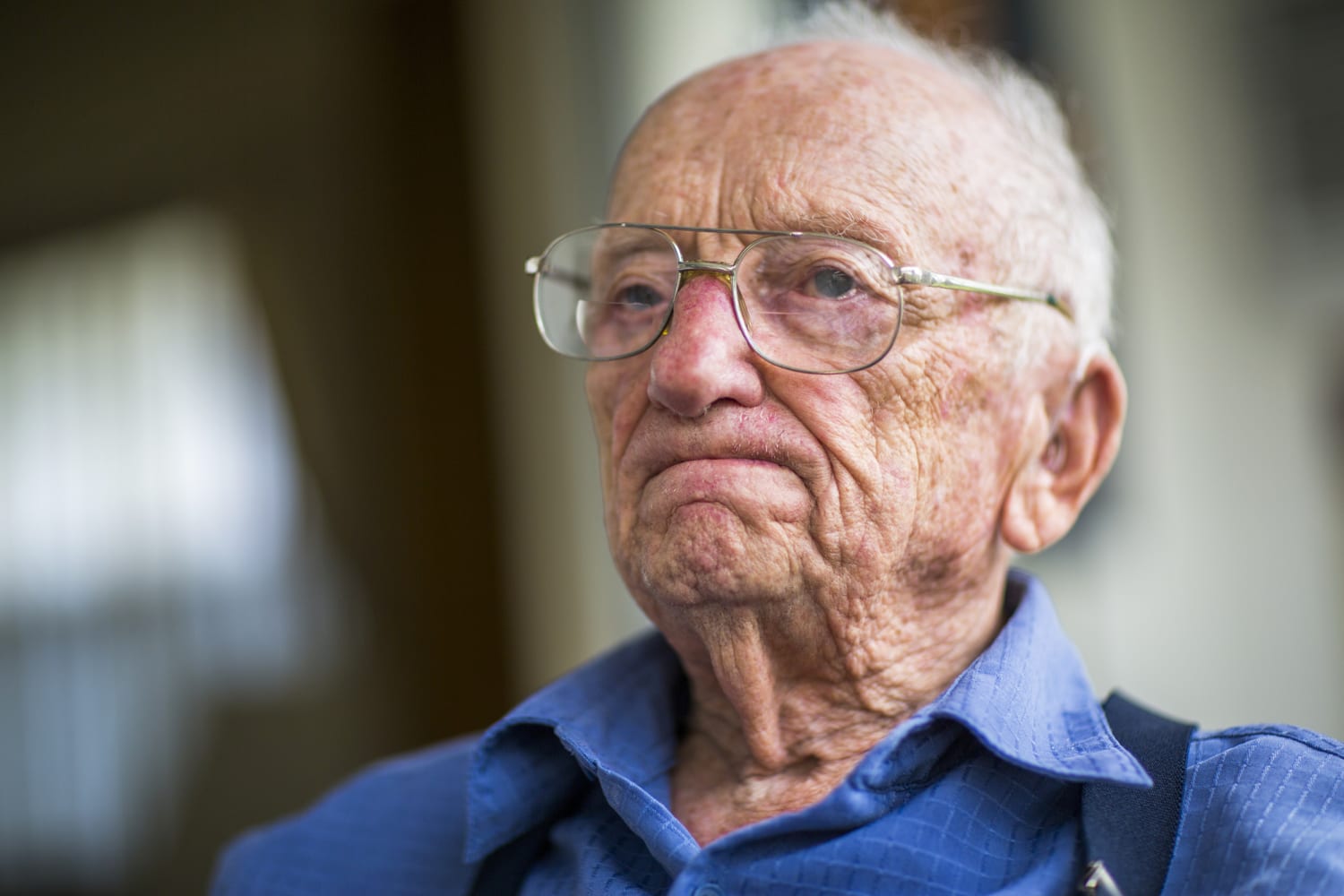Ferencz said it took immense effort to keep his emotions in check.
“I knew that what I was seeing was horror,” he said.
He told himself: “Just get on with the job, Benny. Just get your evidence. And get your ass out of there.”
Ferencz and his men collected thousands of documents at the camps and facilities in Berlin. They included detailed reports on the Einsatzgruppen, special SS units that roamed Nazi-occupied Europe and killed more than 1 million people.
The Nazis’ studious bookkeeping would soon seal the fate of some of Hitler’s most infamous henchmen.
‘A hot potato’
The first and best-known trial in Nuremberg kicked off in November 1945. It ended with the conviction of Herman Goring and 21 other top Nazi lieutenants.
The U.S. decided to hold 12 more trials in Nuremberg against Nazi judges, doctors and other top figures.

By the time Ferencz found the Einsatzgruppen records, the U.S. had already finalized plans for the other trials.
“I knew I had a hot potato,” he said.
He flew to Nuremberg and told Telford Taylor, the chief counsel for the prosecutions, that they must add another trial. But Telford said it wasn’t possible. The budget had already been set and the Pentagon wasn’t keen on any more trials.
“I got a little bit indignant,” Ferencz recalled. “I said, ‘I have in my hand here the mass murder of a million people. Don’t tell me we can’t put them on trial.’
“He said, ‘Well, can you do it in addition to your other work?’
I said, ‘Sure.’ That’s how I got my first case.”
The trial began on Sept. 29, 1947. The defendants were imposing figures — middle-aged men who had overseen the mass slaughter of innocent civilians. Ferencz was six months shy of his 28th birthday and barely stood 5 feet tall.
He was so short he had to stand on books to reach the courtroom lectern. But he spoke with the power and eloquence of a seasoned litigator.
“The defendants were the cruel executioners whose terror wrote the blackest page in human history,” he said in his opening statement. “Death was their tool and life their toy. If these men be immune, then law has lost its meaning and man must live in fear.”
Ferencz called only one witness — a man who verified the authenticity of the records that documented the “cleansing” of Jews in cities across Europe.
All 22 defendants were convicted, with 14 sentenced to death. But only four were executed, including Otto Ohlendorf, a notorious SS commander.
After the sentencing, Ferencz decided to meet with Ohlendorf in a courtroom holding cell. Not to elicit a confession or probe his mind. Ferencz wanted to extend a favor.
Would Ohlendorf like him to deliver a message to his family?
“I had in mind that he had a wife and five children,” Ferencz said. “Would he like me to say that he was sorry that he brought disgrace on the family or something along those lines?”
But Ohlendorf wasn’t interested. He launched into a diatribe defending the Nazis, saying they were right to resist the “communists” seeking to take over Germany and the rest of the world.
Ferencz cut him off midsentence and ended the conversation with three words uttered in German: “Goodbye, Mr. Ohlendorf.”
“There was no remorse whatsoever,” Ferencz said. “No regrets.”
‘Contagious optimism’
In the years after the trial, he didn’t recede into private life.
Ferencz was recruited to lead an effort to return property seized by the Nazis to its owners or their heirs — a first-of-its kind endeavor that led him to stay in Germany for 10 years. During that period, he was also called in to help negotiate a reparations agreement with the government of West Germany.
It was a fraught and dangerous undertaking. Militant Jewish groups and others angry over the dealings with the Germans resorted to death threats and letter bombs to deter the people involved in the negotiations.
“One thing that people don’t realize is how incredibly dangerous it was for these people,” said Greg Schneider, executive vice president of the Conference on Jewish Material Claims Against Germany, or Claims Conference, an organization created to negotiate the agreements and later handle the dispersal of the money.
“But Ben always spoke about it as if he had no other choice — given what the survivors endured, that it would be unimaginable to him to give up despite whatever dangers he might face.”
The German government ultimately agreed to compensate Holocaust victims around the world.
West German Chancellor Konrad Adenauer was first to sign the deal in Luxembourg in 1952, but his pen had run out of ink so he borrowed one of Ferencz’s — a pen that his wife, Gertrude, whom he had started dating as a teenager, had gifted him when he graduated from law school.
Since the agreement was finalized, roughly $90 billion has been distributed to Holocaust survivors, according to the Claims Conference.
“He is a treasure of humanity,” Schneider said of Ferencz.
Source: | This article originally belongs to Nbcnews.com









